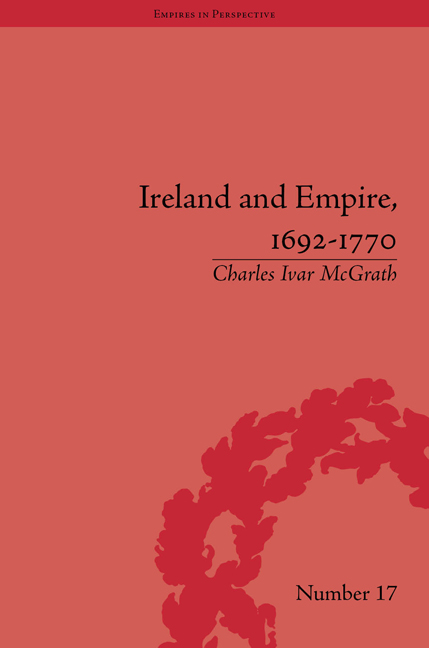1 - Contexts
from Part 1 - Contexts
Summary
The maintaining a standing army in Ireland since the Revolution; the building of barracks for the ease of the country and the reception of the army; the supporting of those barracks. The increase of the civil list, and several other exigencies of the state, having exceeded the produce of the hereditary revenue of the crown, it became necessary to have frequent parliaments in this kingdom, in order to obtain aids by additional duties, which are generally granted for two years, and therefore the parliament assembles every second year.
Published in London in 1754, the foregoing extract from a pamphlet on the revenue and national debt of Ireland offered a succinct summary of the complex constitutional, political, financial and military alterations that had occurred in Ireland since the Glorious Revolution of 1688. While not considered revolutionary, those changes were at times extraordinary. The advent of regular parliaments from 1692 onwards represented a dramatic break with the past. Politics was wholly altered as the executive arm of government had to deal with a much more forthright and influential legislature, which utilized its newly acquired control of the purse strings to good effect in extracting further concessions on constitutional, political, religious, economic and other issues.
According to the author of the 1754 pamphlet, the maintenance of a standing army, including the provision of barracks, was the primary reason for these dramatically changed circumstances. The permanent placement of a 12,000-strong standing army in Ireland in the aftermath of the war of 1689–91 required innovation in government, parliament and the country in general. It required new financial practices, new infrastructures and, in practical terms, a place for the soldiers to live – a place of residence. That army also needed to have a use, or uses, both at home and abroad. All of these considerations were recognized, engaged with and successfully facilitated during the following decades, culminating in 1770 with the official augmentation by act of the Irish parliament of the size of that standing army to 15,235 soldiers.
- Type
- Chapter
- Information
- Ireland and Empire, 1692–1770 , pp. 1 - 12Publisher: Pickering & ChattoFirst published in: 2014



